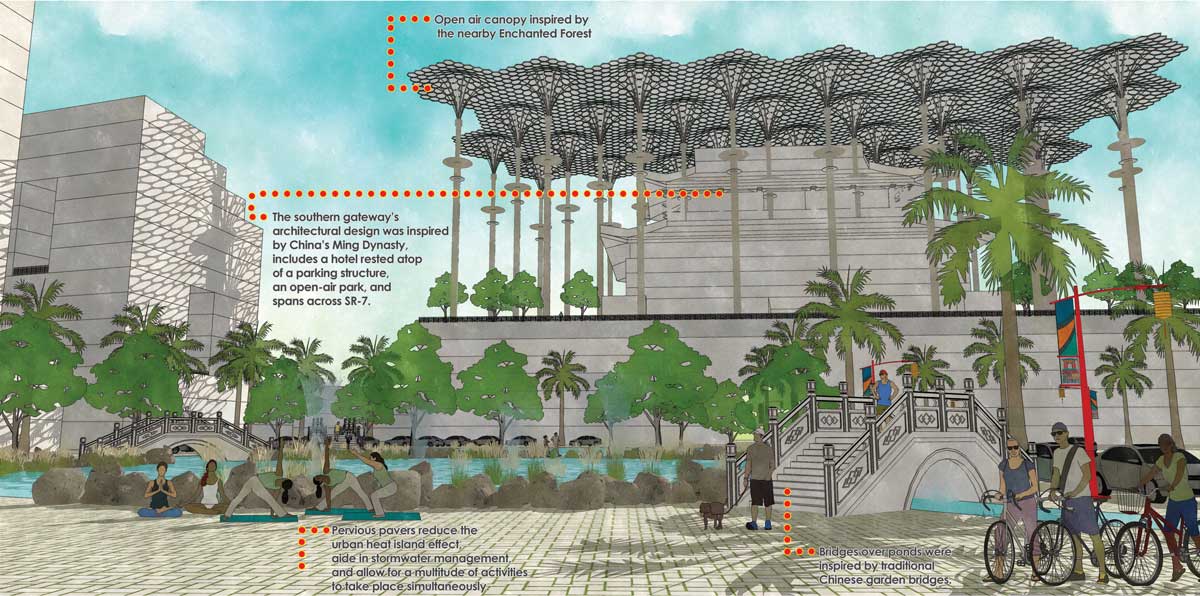North Miami’s Chinatown works on incubator linkup

North Miami’s Chinatown is working on a collaboration among the city, Trinity Church and the business school at Johnson & Wales University.
This project, which will manifest physically around the end of this year, is to be an entrepreneurial “incubator” in the Chinatown corridor, said North Miami City Manager Larry Spring. The space could also include a welcome center for investors, visitors and residents interested in having a more “interactive” experience of the proposed Chinatown project.
“The reason why this is important is because hearing back from investors when they come to the space, they’re not seeing a presence yet. We thought it’d be brilliant to start with this to work with public and private sectors to bring one of these incubator spaces,” Mr. Spring said, “a place where people can come see the physical master plan. We’d also like to look into research and development, particularly in the form of alternative medicine and Chinese medicine.”
There is still no set plan for the space’s size or look. Using rooms inside Trinity Church is a possible option, Mr. Spring said, and “perhaps retrofitting portions of that facility into the incubator space.” A shared workspace with temporary walls and cubicles is a possibility.
Trinity Church is a good partner for the project because a youth entrepreneurial program already runs from the building, Mr. Spring said.
“We had a very exciting meeting with some stakeholders at Johnson & Wales. Their team from the business school hosted us to help us move forward with the entrepreneurial health industry incubator in the Chinatown corridor,” Mr. Spring said. “By the end of the year we will probably have all of the appropriate legal documents properly vetted and approved by the CRA and city council and be able to actually see a physical manifestation of this plan.”
The Johnson & Wales team is also developing the specific incubator model Chinatown will use, Mr. Spring said. It is likely that the model will include private sector investors overseeing the incubator and making their own individual investments in the businesses that are chosen to be there.
The average time a start-up would be in the incubator would be around two years, with the ideal conclusion being the business moving out into Chinatown or elsewhere in the city, Mr. Spring said. The incubator is ultimately “for creating new small businesses for the city at large,” he said.
The North Miami Community Redevelopment Agency (CRA) is expected to make “some type of financial contribution” to the idea, Mr. Spring said, though no specific number has been set.
“Given that it’s public/private, think about leverage we already have. We already have a physical space and a partner to work with us,” Mr. Spring said. “Any pressure on the CRA would be lightened.”
The Chinatown project’s engineers are also “close” to finalizing the review of the stormwater system to “see where we have opportunities,” Mr. Spring said. The delay in completion stems from where the city can put several stormwater retention ponds but a request for proposals (RFP) for architecture firms could be released by the end of September or beginning of October for the street redesign, Mr. Spring said. He previously said in December 2017 that at the beginning of 2018, the city would request proposals from architectural firms.
The Chinatown Cultural Arts & Innovation District, which was championed by Vice Mayor Alix Desulme and designated by the North Miami City Council in 2016, is to be comprised of 16 blocks of commercially zoned land along Northwest Seventh Avenue between 119th and 135th streets. The area is to be complete with parks, green space, bike lanes and rooftop gardens, along with pagodas, canals and an entrance inspired by the Ming Dynasty.
The city completed a conceptual design master plan for the district in September 2017. Its Community Redevelopment Agency approved the city’s master plan on Nov. 14, 2017, according to Mr. Spring.
The CRA paid about $175,000 to Keith & Schnars to develop the master plan and the city planned a minimum of $3 million for street construction, Mr. Spring told Miami Today in December 2017. The total contract with Keith & Schnars is $200,000 to $250,000 and the project is estimated to cost $60 million, with $2 million for maintenance and beautification and $300 million in total potential development.







Recent Comments